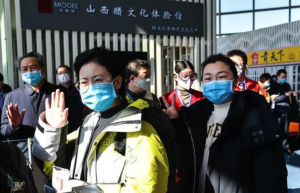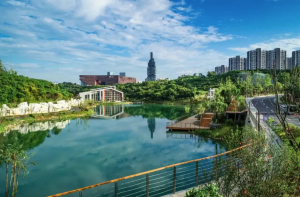
As of September 21, 24 hours Jiangsu new coronavirus pneumonia outbreak update
From 0 to 24:00 on September 21, there were no new local confirmed cases in Jiangsu, and 2 new local asymptomatic infections (reported in Nantong, returned to Suzhou from other provinces, under quarantine medical management in designated hospitals).
There was one new confirmed case imported from abroad (imported from Germany, under quarantine treatment in Nanjing designated hospital) and six new cases of asymptomatic infections imported from abroad. Six new cases of asymptomatic infected persons (all imported from abroad) were released from medical isolation.
Details of the new confirmed cases and asymptomatic infected persons will be released by the relevant municipalities.
At present, there are 15 confirmed cases (3 local cases and 12 imported cases) and 45 asymptomatic cases (6 local cases and 39 imported cases) under isolation medical management in designated hospitals.
Alert on the risk level of the epidemic
As of 21:00 on September 21, there are 721 high-risk areas in the country, involving 22 provinces (autonomous regions and municipalities directly under the Central Government) and Xinjiang Production and Construction Corps, and 51 municipalities (districts); 834 medium-risk areas, involving 28 provinces (autonomous regions and municipalities directly under the Central Government) and Xinjiang Production and Construction Corps, and 64 municipalities (districts); 129 low-risk areas, involving 28 provinces (autonomous regions and municipalities directly under the Central Government) and Xinjiang Production and Construction Corps, and 62 municipalities (districts) and Xinjiang Production and Construction Corps, 62 municipalities (districts).
Risk area distribution.
Hedong District, Hexi District, Nankai District, Hebei District, Dongli District, Xiqing District, Jinan District, Beichen District, Tianjin.
Shijiazhuang City, Hebei Province, Yuhua District, Luancheng District, Tangshan City, Fengrun District, Baoding City, Zhuozhou City, Lianchi District, Qingyuan District, Chengde City, Shuangluan District, High-tech Zone, Langfang City, Sanhe City.
Hongshan District, Arukorqin Banner, Songshan District, Wengniut Banner, Chifeng City, Inner Mongolia Autonomous Region, Manzhouli City, Hulunbeier City, Ejina Banner, Cek Port Economic Development Zone, Alashan League.
Shenhe District, Tiexi District, Shenyang City, Liaoning Province.
Xiangfang District, Harbin City, Heilongjiang Province, Saltu District, Longfeng District, Daqing City, Xiangyang District, Qianjin District, Dongfeng District, Suburban District, Jiamusi City, Aihui District, Heihe City.
Songjiang District, Qingpu District, Shanghai.
Ningdu County, Ganzhou City, Jiangxi Province, Yongfeng County, Jingkai District, Ji’an City.
Jimo District, Chengyang District, Qingdao City, Shandong Province.
Shenqiu County, Zhoukou City, Henan Province.
Enshi City, Enshi Tujia and Miao Autonomous Prefecture, Hubei Province.
Luohu District and Futian District, Shenzhen City, Guangdong Province, Shatian Town, Dongguan City, Taishan City, Jiangmen City.
Fangchengcheng District, Fangchenggang City, Dongxing City, Guangxi Zhuang Autonomous Region.
Jiyang District, Sanya City, Wanning City, Hainan Province.
Tongnan District, Chongqing Municipality.
High-tech Zone, Wuhou District, Longquanyi District, Jinjiang District, Qingyang District, Jinniu District, Chenghua District, Chengdu City, Sichuan Province, Jiangyang District, Luzhou City, Funsan District, Suining City, High-tech Zone, Jingkai District, Shizhong District, Dongxing District, Neijiang City, Cui Ping District, Xuzhou District, Sanjiang New District, Yibin City, Dachuan District, Dazhou City, Markang City, Aba Tibetan and Qiang Autonomous Prefecture.
Nanming District, Yunyan District, Huaxi District, Qingzhen City, Wudang District, Xiuwen County, Guiyang City, Guizhou Province, Weaving County, Bijie City, Xuzhou District, Zunyi City.
Ruili City, Dehong Dai Jingpo Autonomous Prefecture, Yunnan Province.
Chengguan District, Dulongdeqing District, Lhasa City, Tibet Autonomous Region.
Suzhou District, Jiuquan City, Gansu Province, Linxia City, Linxia Hui Autonomous Prefecture, Wudou District, Longnan City, Gansu Province.
Monya city, Haixi Mongolian and Tibetan Autonomous Prefecture, Golmud city, Qinghai Province.
Zhongning County, Zhongwei City, Ningxia Hui Autonomous Region.
Tianshan District, Shaibak District, Xincheng District, Shuimangu District, Middong District, and Toutunhe District, Urumqi City, Xinjiang Uygur Autonomous Region; Gaochang District, Turpan City; Korla City, Bayingoleng Mongol Autonomous Prefecture; Yining City and Yining County, Yili Kazakh Autonomous Prefecture; and Usu City, Tacheng District.
Pingfang (district) Township and Sanmafang (district) Township, Chaoyang District, Beijing, and Yizhuang (district) Township, Daxing District.
Qidong City, Nantong City, Jiangsu Province.
Longgang city, Wenzhou city, Zhejiang province.
Siming District, Xiamen City, Fujian Province.
Baoji City, Shaanxi Province, High-tech Zone, Chencang District, Qishan County, Shangluo City, Danfeng County.
Xinjiang Production and Construction Corps.
Expert reminder.
Recently, many places in the country reported a local aggregation of the epidemic, the existence of multiple transmission chains, the epidemic prevention and control situation is serious and complex, it is still necessary to strictly implement the prevention and control measures without slackening. The Omicron mutant strain is characterized by rapid transmission, short incubation period and high insidiousness, which poses a greater challenge to prevention and control. Each person is the first person responsible for his or her own health and should continue to protect his or her health by insisting not to leave the country unless it is necessary, not to go to medium to high risk areas and areas with local outbreaks, and to reduce cross-provincial and cross-regional movement.
First, take the initiative to report in a timely manner and cooperate with prevention and control management. Those who have a recent history of residence in areas with local outbreaks, especially those who have intersected with new confirmed cases or asymptomatic infected persons with trajectories, should take the initiative to report to their units, communities (village groups) or hotels, and actively cooperate with the implementation of preventive and control measures such as information registration, nucleic acid testing and isolated medical observation. Pay close attention to the official release of authoritative information on the epidemic, the dynamics of the domestic epidemic and changes in the risk level of the epidemic around the country, disbelieve rumors, do not spread rumors, always remain vigilant, take strict precautions, and support and cooperate with preventive and control measures.
Second, actively vaccinate against the new coronavirus. Vaccination is an effective means of interrupting the spread of the new coronavirus and preventing and controlling the new coronavirus outbreak, helping to establish a herd immune barrier and reducing the risk of serious illness and death after infection. People over 60 years old who are eligible for vaccination should complete the full course of vaccination and receive a booster dose as soon as possible.
Third, adhere to standing epidemic prevention and control measures. It is still important to insist on wearing masks in places where people gather and indoor spaces. When entering public places such as shopping malls, restaurants and hotels, actively cooperate in wearing masks and taking temperature tests by code. When queuing, paying, talking, exercising, visiting and shopping, pay attention to maintaining a social distance of more than 1 meter. When participating in nucleic acid testing, wear a good mask, maintain a distance of one meter, do not talk and do not gather.
Fourth, enhance personal protection awareness. Adhere to good personal hygiene habits such as washing hands regularly, wearing a mask, ventilating frequently, gathering less, using communal chopsticks, and sharing meals. In case of fever, dry cough, fatigue, nasal congestion, runny nose, sore throat, loss of smell and taste, conjunctivitis, myalgia and diarrhea and other suspicious symptoms, seek medical attention promptly, wear a mask throughout the journey and avoid taking public transportation.


Average Rating